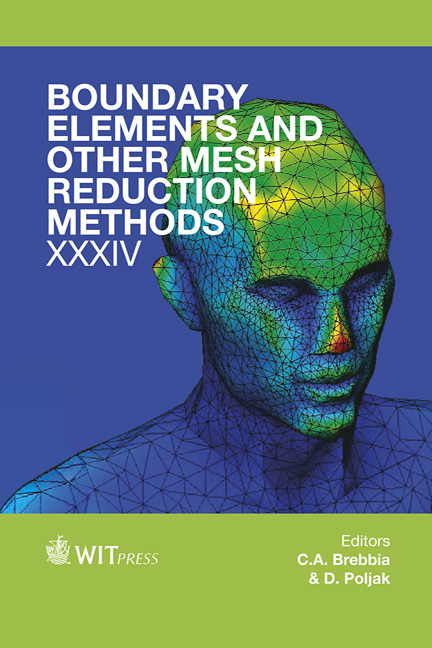A Study On Topology Optimization Using The Level-set Function And BEM
Price
Free (open access)
Transaction
Volume
53
Pages
11
Page Range
123 - 133
Published
2012
Size
667 kb
Paper DOI
10.2495/BE120111
Copyright
WIT Press
Author(s)
T. Matsumoto, T. Yamada, S. Shichi & T. Takahashi
Abstract
A framework to solve topology optimization problems using a level-set based approach and boundary element method (BEM) is presented. The objective functional is assumed to be defined only on the boundary, thus the problem is suitable for handling with BEM. The boundary of the structure is defined as the isosurface of the level-set function. The distribution of the level-set function is obtained by solving an evolution equation defined in a fixed design domain. The evolution equation has a source term related to the topological sensitivity of the objective functional. The sensitivity can be evaluated from BEM analysis results both for the original physical variable and its adjoint variable. The shape of the structure is defined as the isosurface of the level-set function defined in a fixed design domain, and the boundary mesh is generated by extracting the isosurface. Since the fixed design domain has a simple rectangular solid shape and does not change its domain shape through iteration steps, the evolution equation of the level-set function can be solved by FEM more efficiently than by BEM. The effectiveness of the proposed approach is demonstrated through a minimum compliance topology optimization problem. Keywords: topology optimization, level-set function, adjoint method, boundary element method. 1 Introduction Because of the current development of fast boundary element algorithms [1, 2], BEM may become a strong analysis tool not only for shape optimization problems but also for topology optimization problems. In particular, BEM is effective for linear problems and those with infinite domains.
Keywords
topology optimization, level-set function, adjoint method, boundary element method.





